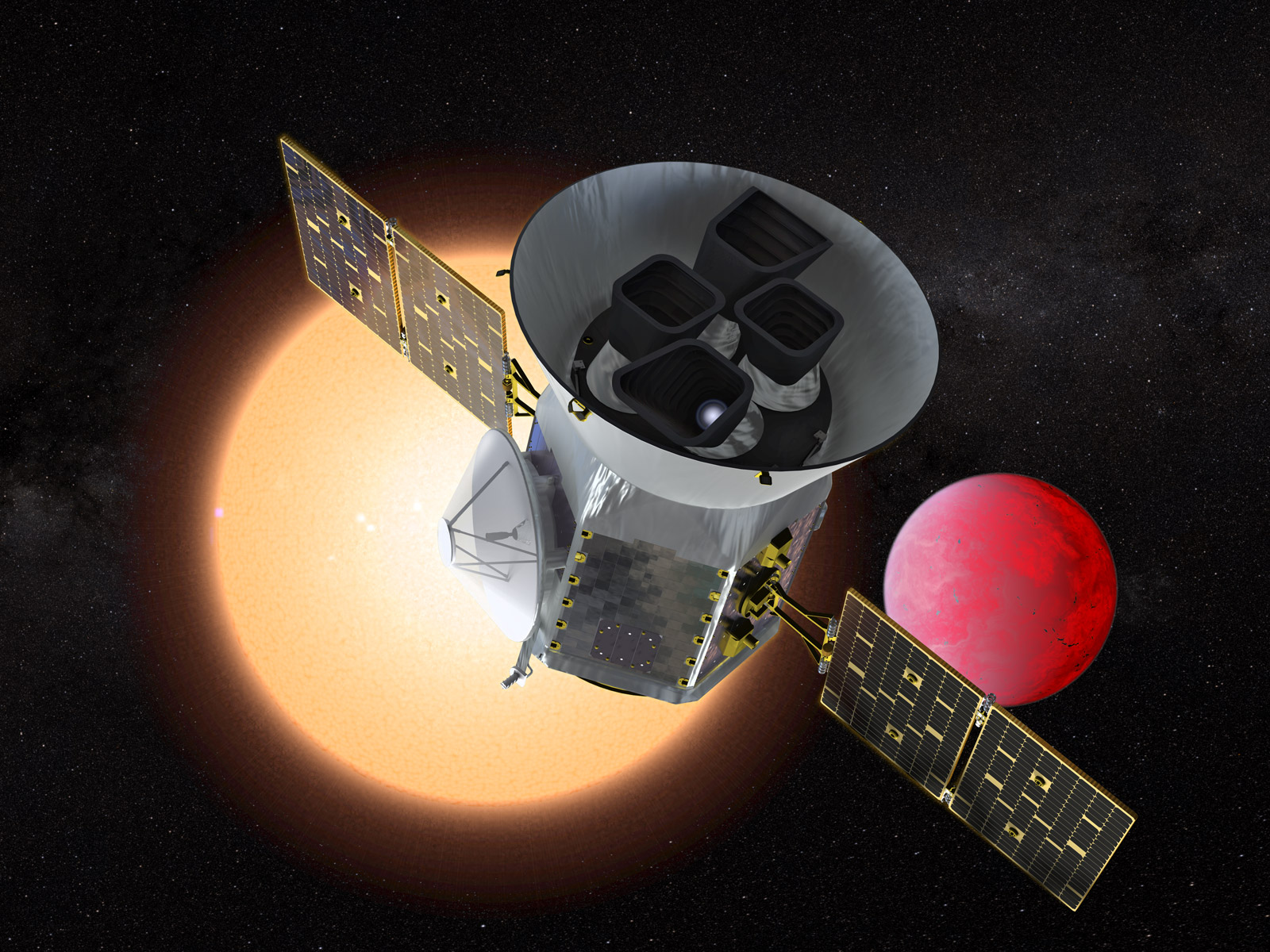'Improbable Planet' Somehow Survives Being Swallowed by Red Giant Star
It shouldn't exist, but it does.

Scientists have discovered a "survivalist" planet that shouldn't exist orbiting a pulsating star.
Using astroseismology data from NASA's Transiting Exoplanet Survey Satellite, or TESS, a team of researchers studying the red giant stars HD 212771 and HD 203949 detected oscillations, which are "gentle pulsations at the surfaces of stars," lead author Tiago Campante of the Instituto de Astrofísica e Ciências do Espaço (IA) and Faculdade de Ciências da Universidade do Porto, told Space.com. This is actually the first time that oscillations have been found by TESS in stars that host exoplanets.
And, because these stars have orbiting exoplanets, the investigation was able to go even deeper.
"TESS observations are precise enough to allow measuring the gentle pulsations at the surfaces of stars. These two fairly evolved stars also host planets, providing the ideal testbed for studies of the evolution of planetary systems," Campante said in a statement.
Related: The Strangest Alien Planets in Pictures
But one of these systems, HD 203949 and its orbiting exoplanet, sparked confusion. In studying the star, the researchers uncovered details about the star's mass, size and age. They concluded that, given its size, the stage it was at in stellar evolution and the distance of its orbiting exoplanet, the envelope of the red giant star should have theoretically engulfed the exoplanet.
But, while analysis of the star shows that this planet shouldn't exist, further investigation shows that the planet somehow did avoid engulfment.
Get the Space.com Newsletter
Breaking space news, the latest updates on rocket launches, skywatching events and more!
To pinpoint the exoplanet's location and to confirm that it must be surviving getting swallowed by the star, Dimitri Veras of the University of Warwick's Department of Physics performed numerical simulations of the system, which the team analyzed.
"Solution of this scientific problem — how the planet avoided the engulfment — required very hard work and a lot of calculations," study author Vardan Adibekyan told Space.com in an email. These simulations pointed to tides created by star-planet interactions that, according to the scientists in the statement, brought the exoplanet in toward the star.
"We determined how this planet could have reached its current location, and to do so whether or not the planet had to survive engulfment within the stellar envelope of the red giant star. The work sheds new light on the survivability of planets when their parent stars begin to die, and might even reveal new aspects of tidal physics," Veras said in the statement.
"This study is a perfect demonstration of how stellar and exoplanetary astrophysics are linked together. Stellar analysis seems to suggest that the star is too evolved to still host a planet at such a 'short' orbital distance, while from the exoplanet analysis we know that the planet is there!" study co-author of IA and Universidade do Porto added in the statement. "The solution to this scientific dilemma is hidden in the 'simple fact' that stars and their planets not only form but also evolve together. In this particular case, the planet managed to avoid engulfment."
This work was published in a study on Oct. 29, 2019, in The Astrophysical Journal.
- NASA's TESS Exoplanet-Hunting Mission in Pictures
- Exoplanet Hunters Have a New Plan to Spot Hidden 'Migrating' Worlds
- The Strangest Alien Planets (Gallery)
Follow Chelsea Gohd on Twitter @chelsea_gohd. Follow us on Twitter @Spacedotcom and on Facebook.
Join our Space Forums to keep talking space on the latest missions, night sky and more! And if you have a news tip, correction or comment, let us know at: community@space.com.

Chelsea “Foxanne” Gohd joined Space.com in 2018 and is now a Senior Writer, writing about everything from climate change to planetary science and human spaceflight in both articles and on-camera in videos. With a degree in Public Health and biological sciences, Chelsea has written and worked for institutions including the American Museum of Natural History, Scientific American, Discover Magazine Blog, Astronomy Magazine and Live Science. When not writing, editing or filming something space-y, Chelsea "Foxanne" Gohd is writing music and performing as Foxanne, even launching a song to space in 2021 with Inspiration4. You can follow her on Twitter @chelsea_gohd and @foxannemusic.









